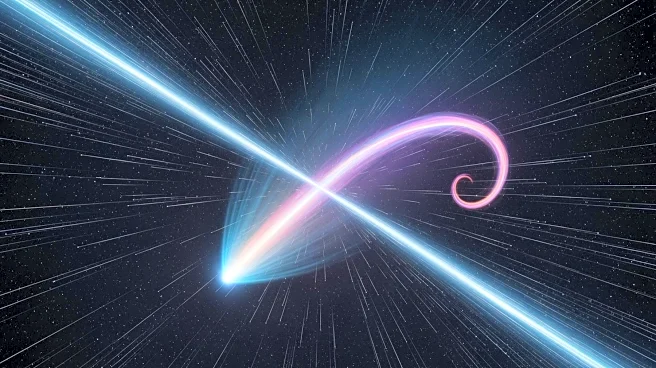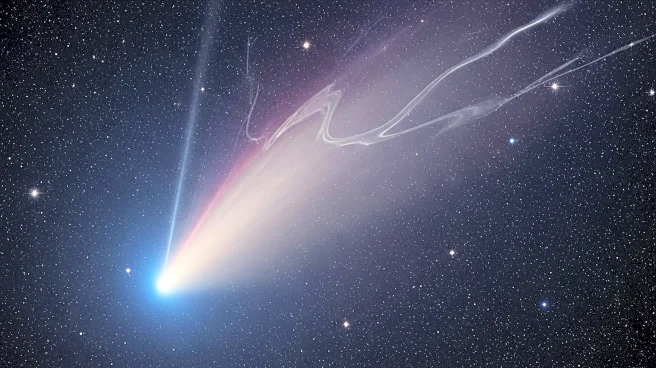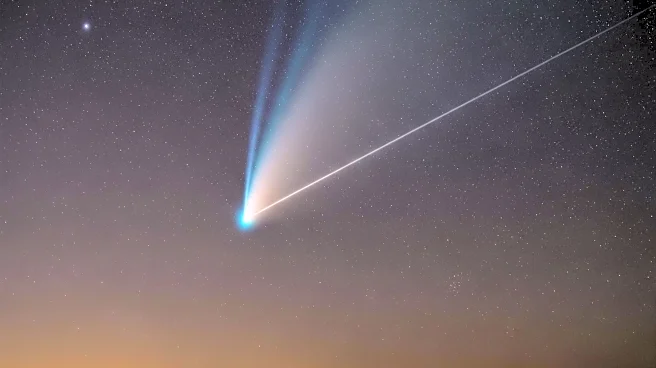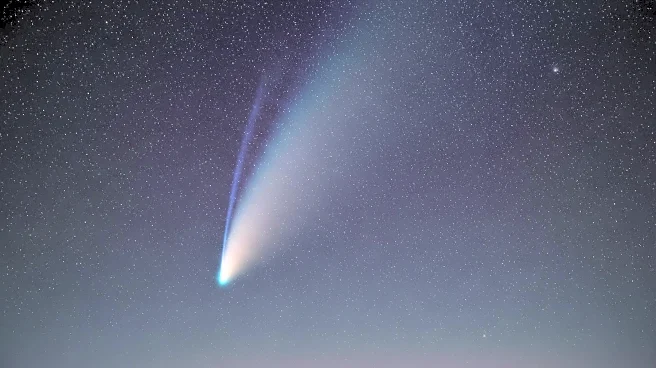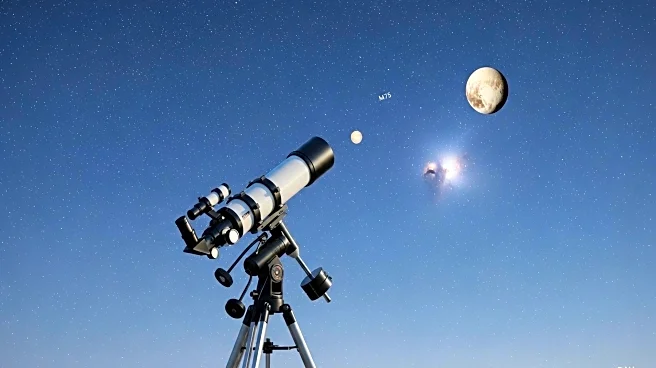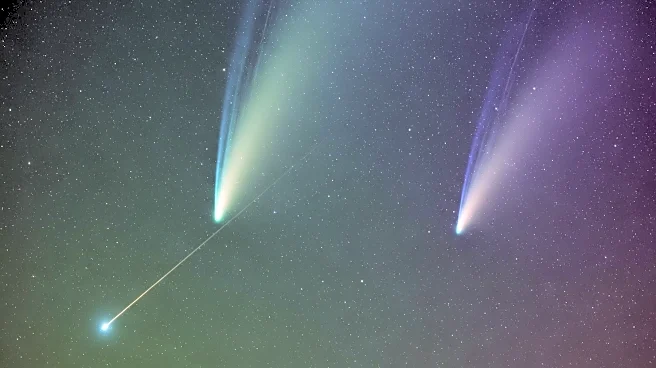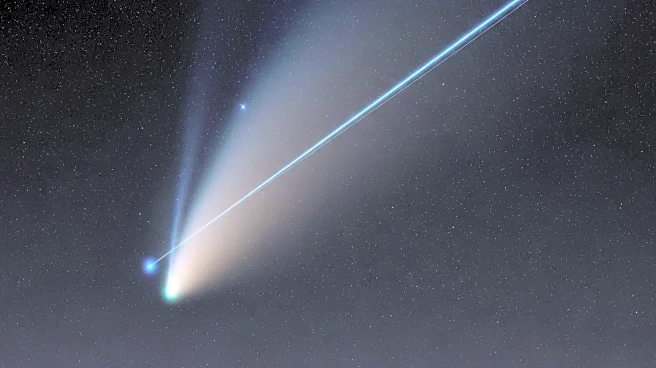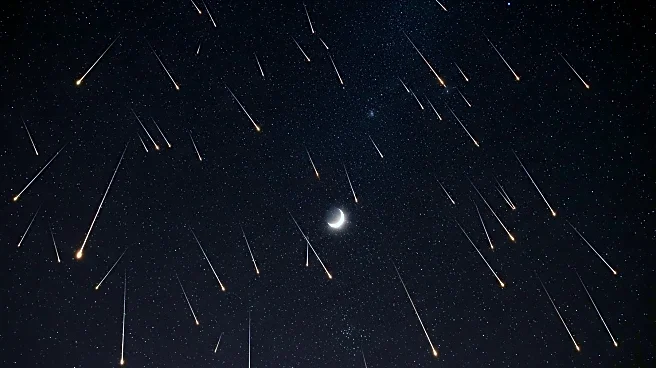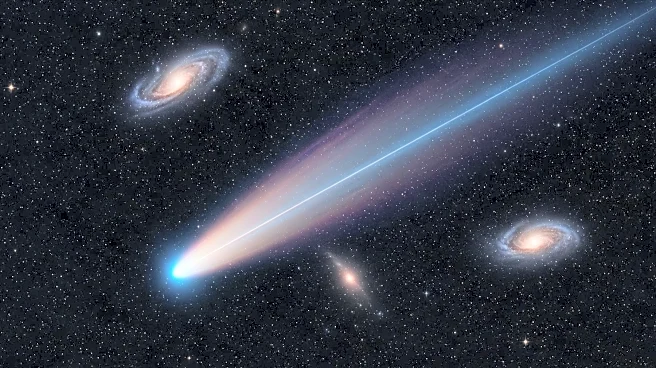What's Happening?
Astrophotographer Brennan Gilmore captured images of the solar wind stripping a section from Comet Lemmon's tail. The comet, officially known as C/2025 A6 (Lemmon), is brightening as it approaches Earth,
with its closest approach expected on October 21. Gilmore's images show the comet's glowing green coma and its tail, which is affected by the solar wind. The comet's tail always points away from the sun due to the solar wind's influence. The images were taken using a Takahashi Epsilon 130D Newtonian telescope and a ZWO astronomy camera. Comet Lemmon's brightness is increasing, raising hopes for it to become visible to the naked eye.
Why It's Important?
The disruption of Comet Lemmon's tail by solar wind highlights the dynamic nature of celestial bodies and their interactions with solar phenomena. This event provides valuable insights into the behavior of comets and the impact of solar wind on their structure. For astronomers and astrophotographers, such occurrences offer opportunities to study and document these interactions. The increasing brightness of Comet Lemmon may attract public interest and engagement in astronomy, encouraging more people to observe and learn about celestial events.
What's Next?
As Comet Lemmon continues to brighten, astronomers and enthusiasts will monitor its progress and visibility. The comet's closest approach to Earth on October 21 will be a key event for observation. Astrophotographers may take advantage of this opportunity to capture more images and study the comet's behavior. The public may also be encouraged to observe the comet, potentially leading to increased interest in astronomy and space exploration.
